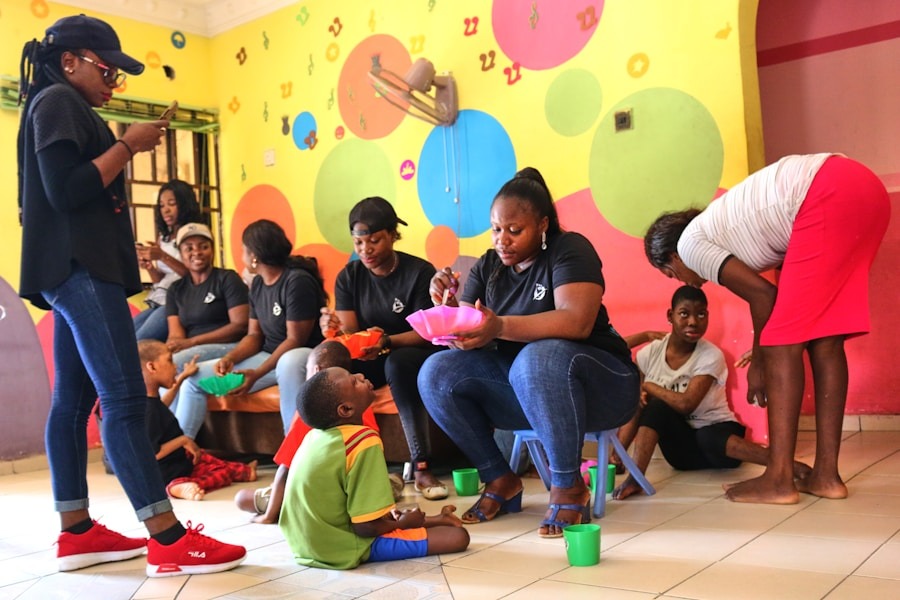Language acquisition is a complex process that involves not only the mastery of vocabulary and grammar but also the development of listening, speaking, reading, and writing skills. Linguistic challenges can arise from various sources, including cognitive, social, and cultural factors. For instance, learners may struggle with phonetics and pronunciation due to differences in their native language, which can lead to difficulties in communication.
Additionally, the intricacies of syntax and semantics can pose significant hurdles for students, particularly those who are learning a second language. These challenges are often compounded by the emotional aspects of language learning, such as anxiety or lack of confidence, which can inhibit a learner’s ability to engage fully in the learning process. Moreover, linguistic challenges are not uniform; they vary widely among individuals based on their backgrounds and experiences.
For example, a student who has been exposed to multiple languages from an early age may have a different set of challenges compared to a monolingual learner. Cultural context plays a crucial role in shaping how language is perceived and used. Certain idiomatic expressions or cultural references may be completely foreign to learners from different backgrounds, leading to misunderstandings or misinterpretations.
Understanding these nuances is essential for educators as they strive to create effective language learning experiences that cater to the diverse needs of their students.
Key Takeaways
- Linguistic challenges can vary greatly among language learners and may include pronunciation, grammar, vocabulary, and cultural differences.
- Effective teaching strategies for language learning include using a variety of activities, providing opportunities for practice and feedback, and integrating real-life language use.
- Addressing individual learner needs involves understanding each student’s strengths, weaknesses, and learning styles, and providing personalized support and resources.
- Creating a supportive learning environment for language learners includes fostering a positive and inclusive classroom culture, promoting risk-taking and making mistakes, and providing emotional support.
- Technology can enhance language learning by providing interactive and engaging resources, opportunities for authentic language use, and personalized learning experiences.
- Collaborating with language specialists and support staff can provide valuable insights, resources, and support for both teachers and students in addressing linguistic challenges.
Implementing effective teaching strategies
Personalized Instruction for Diverse Learners
To address the multifaceted nature of linguistic challenges, educators must employ a variety of effective teaching strategies tailored to the specific needs of their learners. One such strategy is the use of differentiated instruction, which involves modifying content, processes, and products based on individual student needs. For instance, teachers can provide varied reading materials that cater to different proficiency levels within the same classroom.
Fostering Authentic Communication through CLT
Another effective strategy is the incorporation of communicative language teaching (CLT), which emphasizes interaction as a primary means of language learning. By creating opportunities for students to engage in meaningful conversations, role-plays, and group activities, educators can help learners practice their language skills in authentic contexts. This approach encourages students to Use Language as a Tool for Communication.
Project-Based Learning for Real-World Applications
Additionally, integrating project-based learning can further enhance language acquisition by allowing students to collaborate on real-world tasks that require them to use their language skills creatively and critically. This method helps learners develop a deeper understanding of language and its practical applications.
Addressing individual learner needs

Recognizing and addressing individual learner needs is paramount in fostering an inclusive language learning environment. Each student brings unique experiences, strengths, and challenges to the classroom, necessitating a personalized approach to instruction. One effective way to identify these needs is through ongoing assessment and feedback.
Formative assessments, such as quizzes, peer reviews, and self-assessments, provide valuable insights into each learner’s progress and areas for improvement. By analyzing this data, educators can tailor their instruction to better support individual students.
When educators take the time to understand their students’ backgrounds, interests, and motivations, they can create more relevant and engaging lessons. For example, incorporating culturally relevant materials or themes that resonate with students’ lives can increase their investment in the learning process. Furthermore, providing opportunities for student choice in assignments allows learners to pursue topics that interest them while practicing their language skills in a meaningful way.
Creating a supportive learning environment
A supportive learning environment is essential for fostering language development and encouraging students to take risks in their language use. This environment should be characterized by mutual respect, open communication, and a sense of community among learners. Establishing clear expectations and norms within the classroom can help create a safe space where students feel comfortable expressing themselves without fear of judgment or ridicule.
For instance, implementing a “no wrong answers” policy during discussions can encourage students to share their thoughts freely, knowing that their contributions are valued. Additionally, promoting collaboration among students can enhance the sense of community within the classroom. Group work and peer-to-peer interactions not only facilitate language practice but also help build social connections among learners.
Educators can foster this collaborative spirit by designing activities that require teamwork and collective problem-solving. For example, students could work together on a project that involves researching a topic and presenting their findings in a creative format. Such collaborative efforts not only improve language skills but also cultivate important interpersonal skills that are vital for success in both academic and professional settings.
Utilizing technology to enhance language learning
In today’s digital age, technology plays an increasingly vital role in enhancing language learning experiences. Various tools and platforms can facilitate interactive and engaging language instruction that caters to diverse learning styles.
These applications allow students to practice vocabulary and grammar at their own pace while providing instant feedback on their performance. Moreover, online resources such as video conferencing tools enable educators to connect with native speakers or other learners from around the world. This exposure to authentic language use can significantly enhance students’ listening and speaking skills while broadening their cultural understanding.
Virtual exchange programs or pen pal initiatives can also provide opportunities for meaningful communication with peers from different linguistic backgrounds. By leveraging technology in these ways, educators can create dynamic learning environments that extend beyond the traditional classroom setting.
Collaborating with language specialists and support staff

Collaboration with language specialists and support staff is crucial for creating an effective language learning framework within educational institutions. Language specialists possess expertise in linguistics and pedagogy that can greatly benefit both teachers and students. By working together, educators can develop targeted interventions for struggling learners or design curriculum materials that align with best practices in language instruction.
For example, specialists may provide professional development workshops for teachers on effective strategies for teaching English as a second language (ESL) or supporting multilingual learners. Additionally, support staff such as special education teachers or counselors can play an integral role in addressing the diverse needs of students with varying linguistic abilities. These professionals can offer insights into specific challenges faced by learners with disabilities or those requiring additional support in language acquisition.
By fostering a collaborative approach among all stakeholders involved in language education—teachers, specialists, support staff, and families—schools can create a comprehensive support system that enhances student outcomes and promotes linguistic proficiency across the board. In conclusion, addressing linguistic challenges requires a multifaceted approach that encompasses effective teaching strategies, individualized support, a nurturing environment, technological integration, and collaboration among professionals. By understanding the complexities of language acquisition and implementing targeted interventions, educators can empower learners to overcome obstacles and achieve success in their language learning journeys.
In a related article, “Exploring the Philosophies of Tagore and Radhakrishnan: Humanism, Intuition, and Man’s Destiny,” the authors delve into the philosophical ideas of two prominent Indian thinkers. Rabindranath Tagore and Sarvepalli Radhakrishnan’s perspectives on humanism, intuition, and the destiny of mankind offer valuable insights that can be applied to various aspects of education, including addressing learners’ linguistic challenges effectively. To read more about their philosophies, click






















+ There are no comments
Add yours